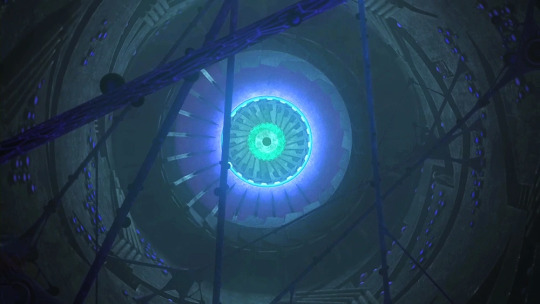#basically trees evolved and made a shit ton of soil
Explore tagged Tumblr posts
Note
Here's something I was thinking about irt Cybertron and its gnarly space ingredients: Cybertron has only had one mass extinction event. Two if you count the war. Whereas on Earth we're on number 6 if you just count the big ones. I'm thinking that there's something about Earth that makes our evolutionary turnover rates crazy fast compared to the rest of the galaxy. Maybe it's the chaos god robo-cocaine.
Make that 7; the Capitanian extinction event is a Big One in its own right. :D And there's two in the Cambrian and one at the end of the Ediacaran that also likely measure highly in severity, it's just that we know shit all about them due to very little preserved evidence.
(and then also consider that Cybertron's civilization lasted for like 4 billion years and they only have two extinction events to show for it, one of which is self-inflicted, vs. Earth, with between 7 and 20 mass extinction events depending on who u ask, within only about 542 million years.)
Anon u have no idea how much I love this idea, I'm folding it into my TF Belief System effective immediately <333
Here's the thing: plate tectonics, and things that are probably mostly related to plate tectonics, are implicated* in not just all of the big mass extinction events (prior to the current one, which is really just our fault) but also like... most of the smaller ones too. Plate tectonics as they work on Earth are pretty much just an Earth thing - there are other planets which have some sort of tectonic activity, but none of them match our mobile-lid style.
*correlation vs. causation is in question for a lot of these; eg. how much of a role Deccan Traps volcanism played in the K-PG extinction vs the Chicxulub impactor is up for debate. With that said, it's likely that in most cases mass extinctions occur via a number of processes which all kind of interact and make each other worse. (It's just that several of those individual processes might be ultimately caused by the stuff we fold under the umbrella of 'plate tectonics.)
What's probably mostly related to plate tectonics? A good chunk of large igneous provinces - both associated with the opening of ocean basins (CAMP, NAIP, Karoo-Ferrar etc.) and the closing of them (Emeishan, Wrangellia). Significant (non-glacial) sea level changes, and changes in ocean current circulation, both in response to reorganization of continents in regards to each other. Significant climatic changes - as a result of large-scale volcanism, or just large-scale increases in weathering/erosion caused by mountain-building. And a bunch of other second- and third-order phenomena that can result from all of the above things, such as episodes of ocean anoxia, large-scale degassing of various shit out of volcanics into the atmosphere, ocean acidification, so on and so forth. You can even link the current icehouse period to plate tectonic processes, although the icehouse climate itself isn't thought to have much to do with extinction rates beyond creating a climate which worked great for the eventual rise of humans...
What causes plate tectonics? We think it has something to do with convection cells in the mantle, but tbh we kind of aren't sure. The main driver of plate motion is subduction - plates essentially being pulled down into the mantle. How did this get started? And also when? There's evidence of some form of plate tectonics from very early in our planet's history, but whether this is similar to modern regimes, and whether it has continued to the modern day or quit and had a break for a while... there's a lot of uncertainty.
So, looking at this from a TF-specific lens... 👀👀👀

I genuinely think that making Unicron be the actual core of Earth is one of the most interesting sci-fi worldbuilding decisions TF canon has made. There are SO MANY IMPLICATIONS. You could tie it in to the Giant Impact Hypothesis and the creation of the goddamn moon, potentially the LLSVPs (which may be the source of some hotspots), the motion of the mantle, initiation and drivers of plate tectonics, and through that the supercontinent cycle, and all of the fun stuff I mentioned above. And THEN there's also the question of how intertwined these things are with the development of life.
(and that's without getting into the chaos-god robo-cocaine. XDD)
#ok im gonna stop here bc this could go on for a loooong time lol#fun fact: there's a hypothesis that part of the late devonian mass extinction was also sorta self-inflicted lol#basically trees evolved and made a shit ton of soil#soil speeds up weathering of rocks#and results in a sudden increase in nutrients delivered to the ocean#high nutrient supply is actually Bad for a lot of living things#and then all the trees might have sucked a lot of CO2 out of the atmosphere and cooled the planet#and THEN there's some LIP volcanism happening around the same time#which probably wouldn't have helped lmao#the tf geology tag#unicron#tfp
47 notes
·
View notes